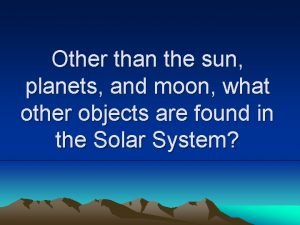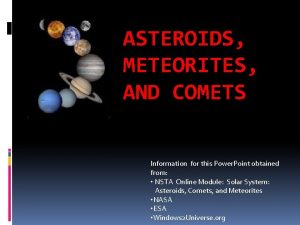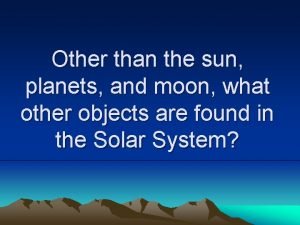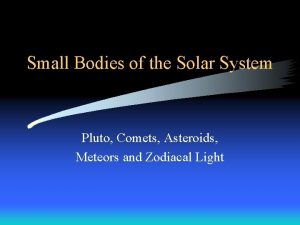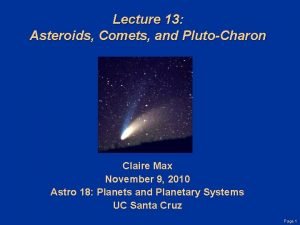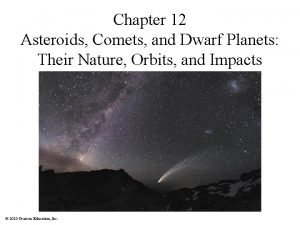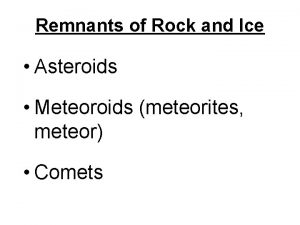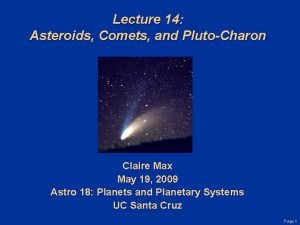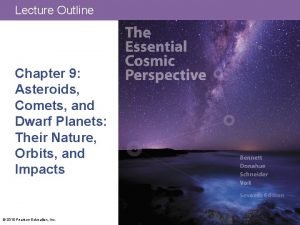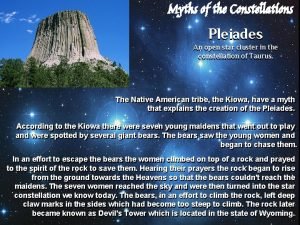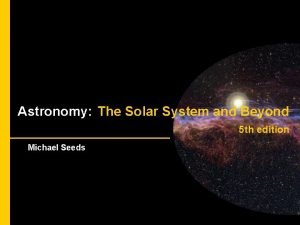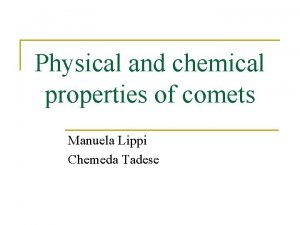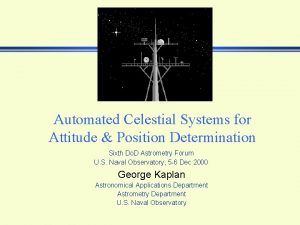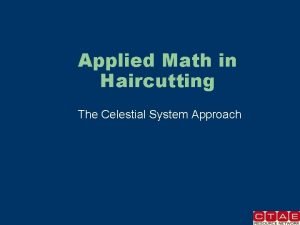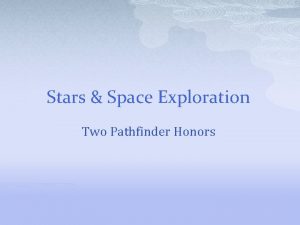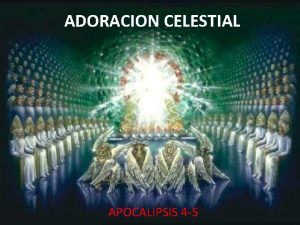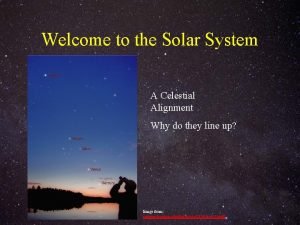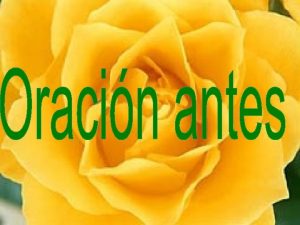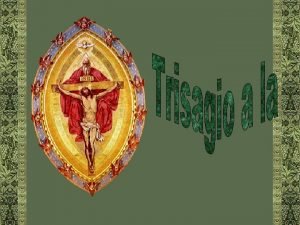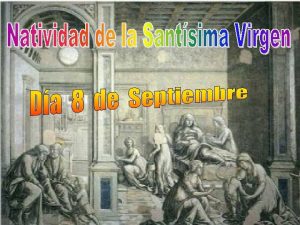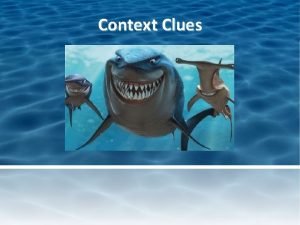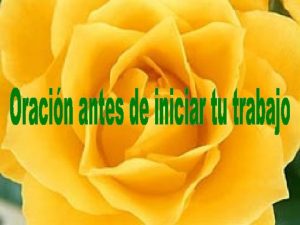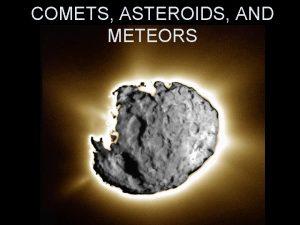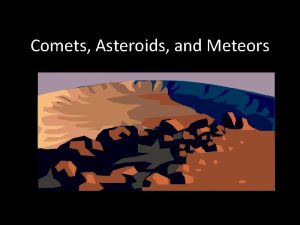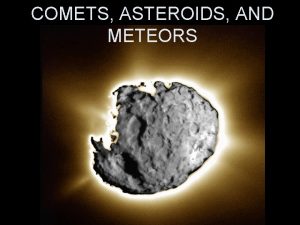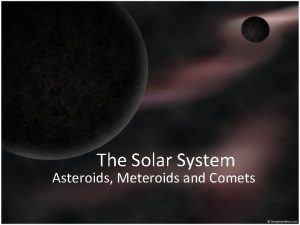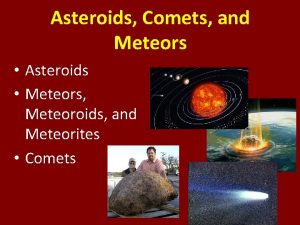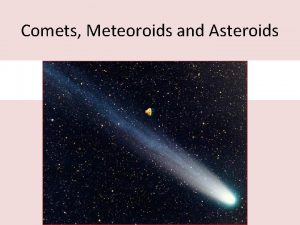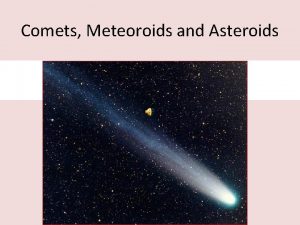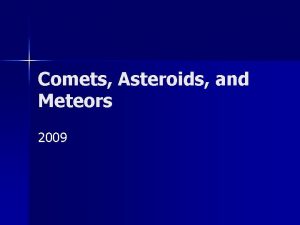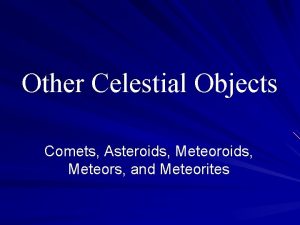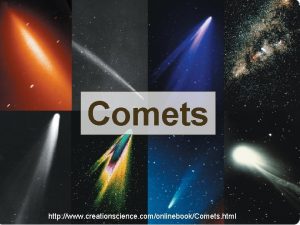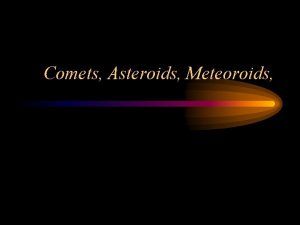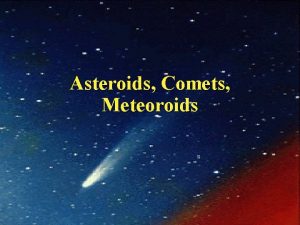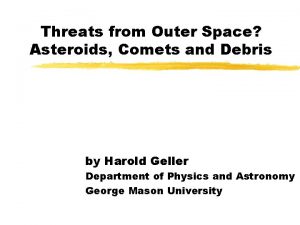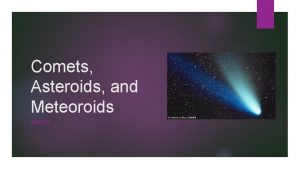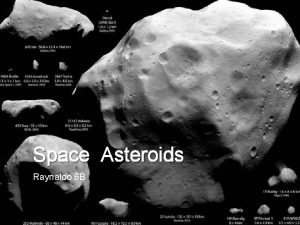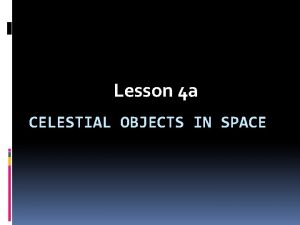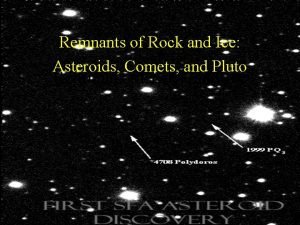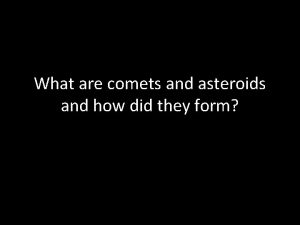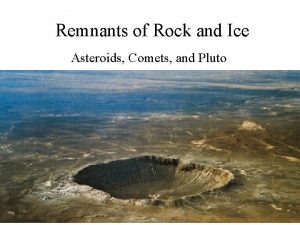SPACE LEFTOVE RS ASTEROIDS METEROIDS AND COMETS Celestial




























- Slides: 28

SPACE LEFTOVE RS ASTEROIDS, METEROIDS, AND COMETS Celestial BOdies

Have you ever seen a falling star Flash across the sky? Said “How I wonder what you are, And how and where and why? I’m trusting you to grant my wish, dear ‘star’, without even knowing what you are. ”

The universe was ‘built’- (not from a package from IKEA) The planets, stars, and gravity- well, you get the idea. Orbits were set around the sun; There were leftovers left When construction was done.


Ice, Metals, Rocks, and Dust Were left to wander far; A group of them found permanence between Jupiter and Mars.

They were called the Asteroids; their home, the asteroid belt. Too small to be called planets; rocky, metallic objects – around the sun in orbits.

The largest asteroids in the belt Were Vesta, Pallas and Hygiea - 250 miles or more. Then there’s dwarf planet Ceres – round as the moon, But it’s 590 miles – of our moon’s size, one fourth.

In 2007, Nasa had a vision And launched mission Dawn, to visit Ceres and Vesta. It reached Vesta the year of 2011, Should reach Ceres this year, to great joy and great cheer.

There are many other asteroids In the belt Irregular and lumped, Potato like shapes with their rubbly bumps.

Some other objects less lucky fell into the sun And some were pushed out of the solar system To the furthest reaches of our galaxy Thanks to planetary gravity. [[ the same that left the belt with not enough stuff, and no way to build a planet out of the stuff that there was ]]

Oh Kuiper belt! Oh Oort cloud! Oh land beyond Neptune! Land of cold! Land of ice! – place of Space “litter” and Pluto!

To start with, cold Kuiper, You were discovered In 1992, oh haven’t you heard? Hypothesised and named after astronomer Gerard Kuiper, Your objects quite many – Of methane, ammonia, water.

The notable few being 3 young dwarf planets, Haumea, and Makemake, and the confusion bound Pluto. And you spat out the moons of Neptune and Saturn, Triton and Phoebe. And also, now, indeed we,

Think that also, the short-period comets Come as affect of the rubble you vomit. They take round 200 years to orbit the sun, In the same orbit as most planets do - when all is said and done.

Beyond you lies the Oort cloud, a hypothesised wonder. They said that more comets Come from this cloud So far away, that the sun’s gravity was weaker And that meant [[ of course ]] That the icy bodies, when sometimes disturbed, Fell into the solar system, Their orbit now curbed.

They instead decide that it seemed like good fun To wander astray and seek out the sun. So their orbits were weird, and long, and in history these long period comets were rather a mystery – Only entering the inner system just once, From what we’ve recorded in years, and in months.


The comets gain their blazing tails With which they make their blazing trails When some part of orbit takes them near to the sun, And the frozen unfreezes, heat, solar radiation and wind, Form their tails and their atmospheres.

The dust in the comet is pushed away from the coma [Which is the cloud of once frozen gases heated by the sun] By solar radiation, whilst the sun in it’s fun converts some of this gas into ions, forming an ion tail.


Most comet’s can’t be seen without a telescope Because though they glow bright, they’re still just too bright But Some can be seen with the naked eye, because of absorbed energy, Or reflecting sunlight off their coma’s and tails

The path of debris behind a comet’s trails Can create a meteor shower on Earth. For example? The Perseid shower occurs every year between August 9 th and 13 th when Earth passes through orbit of the Swift- Tuttle comet.

Then of course, the meteoroids, Or meteorites – as the case may be. What’s the difference, you might ask?

A meteoroid is space debris, much smaller than an asteroid. They range in size from specks of dust To around 10 meters in diameter.

A meteor is what you sometimes call “A falling star” – it shines so bright because it’s burning bright as it takes it’s fall Through our earth’s atmosphere

A meteorite survives the atmosphere And with Earth it comes in contact Deep impressions called craters Are left by their harsh impact

So now you know about the little guys - Less than planetary size Of space and it’s vast expanse They’re important though not planets In their planetary dance.

ABOUT THE AUTHOR Amanda Doran is a once-wannabe astronaut guilty of daydreaming and staring up at the stars when friends are trying to tell stories. “Like, totally, right? ” “Oh, sorry, I didn’t hear you…” She’d probably rather be camping, always, no exceptions, and can often be found up in a tree trying to talk to squirrels. Or, on occasion, the tree. She lives in Tasmania, along with her pet devil, and enjoys a quaint life.
 Difference between comets and asteroids and meteors
Difference between comets and asteroids and meteors Difference between comets and asteroids and meteors
Difference between comets and asteroids and meteors Asteroids meteors and comets worksheet
Asteroids meteors and comets worksheet Comets asteroids
Comets asteroids An icy leftover planetesimal orbiting the sun is
An icy leftover planetesimal orbiting the sun is Iridium layer
Iridium layer Asteroids
Asteroids An icy leftover planetesimal orbiting the sun is
An icy leftover planetesimal orbiting the sun is Jupiter nudges the asteroids through the influence of
Jupiter nudges the asteroids through the influence of Myths about comets
Myths about comets Properties of comets
Properties of comets Physical properties of comets
Physical properties of comets Querido padre celestial te agradezco por
Querido padre celestial te agradezco por Sr 71 star tracker
Sr 71 star tracker Perpendicular distribution hair
Perpendicular distribution hair What is the earth's nearest celestial neighbor
What is the earth's nearest celestial neighbor Sede perfeitos como vosso pai celestial é perfeito
Sede perfeitos como vosso pai celestial é perfeito Apocalipsis adoracion
Apocalipsis adoracion Belt of celestial alignment
Belt of celestial alignment Querido padre celestial te agradezco por
Querido padre celestial te agradezco por Angeles y serafines dicen santo santo santo
Angeles y serafines dicen santo santo santo Querido padre celestial
Querido padre celestial Hoy nace una clara estrella tan divina y celestial
Hoy nace una clara estrella tan divina y celestial Celestial bodies context clues
Celestial bodies context clues Sees the celestial
Sees the celestial Lance simms
Lance simms Padre celestial al entrar en mi lugar de trabajo
Padre celestial al entrar en mi lugar de trabajo Padre celestial al entrar en mi lugar de trabajo
Padre celestial al entrar en mi lugar de trabajo Padre celestial al entrar en mi lugar de trabajo
Padre celestial al entrar en mi lugar de trabajo
